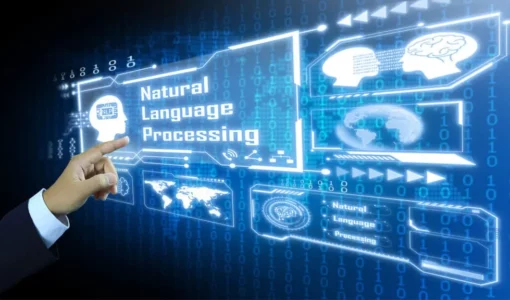Similar analyses can be performed for the contexts Comments and Reviews. Note that for the last one, the 3-class experiments have no results since datasets containing reviews have no neutral sentences nor a representative number of sentences without subjectivity. Column CK from Table 3 exhibits the level of agreement of each dataset in our evaluation by means of Cohen’s Kappa, an extensively used metric to calculate inter-anotator agreement. After a close look in the cases of disagreement with the evaluations in the Gold standard, we realized that other interpretations could be possible for the given text, finding cases of sentences with mixed polarity. Some of them are strongly linked to original context and are very hard to evaluate. Some NYT comments, for instance, are directly related to the news they were inserted to.
Vision Sensing Algorithms Market 2031 Growth Drivers along with … – KaleidoScot
Vision Sensing Algorithms Market 2031 Growth Drivers along with ….
Posted: Fri, 09 Jun 2023 14:10:52 GMT [source]
I simply clicked on the sentiment filter, and the data was presented to me in a user-friendly Brand24 dashboard. Sure, you can try to research and analyze mentions about your business on your own, but it will take lots of your time and energy. Furthermore, the risk of human error is quite significant in that case. However, manual analysis of tens of thousands of texts is time and resource-consuming – and this is where Artificial Intelligence (AI) becomes extremely useful.
Elements of Semantic Analysis
Let us look at some examples of what this process looks like and how we can use it in our day-to-day lives. Sentiment analysis software can readily identify these mid-polar phrases and terms to provide a comprehensive perspective of a statement. Topic-based sentiment analysis can provide a well-rounded analysis in this context. In contrast, aspect-based sentiment analysis can provide an in-depth perspective of numerous factors inside a comment.
Enabling static analysis of SQL queries at Meta – – Facebook Engineering
Enabling static analysis of SQL queries at Meta -.
Posted: Wed, 30 Nov 2022 08:00:00 GMT [source]
In [12] and [16], we reported a neural network-based textual categorization technique for digital library content classification. A category map is the result of performing neural network-based clustering (self-organizing) of similar documents and automatic category labeling. Documents that are similar to each other (in noun phrase terms) are grouped together in a neighborhood on a two-dimensional display. 3, each colored region represents a unique topic that contains similar documents. By clicking on each region, a searcher can browse documents grouped in that region.
How are Sentiment Scores Deduced from Customer Feedback?
The support folks need to know about any blunders as quickly as possible. Because the mentions get detected extremely quickly, customer service has the advantage of rapid reaction time. This makes customer experience management much more seamless and enjoyable.
Are you interested in doing sentiment analysis in languages such as Spanish, French, Italian or German? On the Hub, you will find many models fine-tuned for different use cases and ~28 languages. You can check out the complete list of sentiment analysis models here and filter at the left according to the language of your interest. Our employee engagement and wellbeing solutions are designed to empower leaders, managers and employees to measure, analyze and improve on their workplace performance.
Approaches to Meaning Representations
For long documents, LSA requires a large computing time, reducing its efficiency. This operation will allow us to remove stop words, filter terms that occur too frequently (40% of the documents) or infrequently, convert the words to lowercase, and normalize the resulting word vector. In a few words, LSA is the application of SVD to a matrix that represents the relationship between terms and documents (Term-document matrix). Moreover, it serves as a dimensionality reduction algorithm, because the transformed data is smaller than the original. The data used to support the findings of this study are included within the article.

They can also analyze their posts in social media to find a possible connection between their state of mind and work lives. The capability to define sentiment intensity is another advantage of fine-grained analysis. In addition to three sentiment scores (negative, neutral, and positive), you can use very positive and very negative categories. The goal of this operation is to define whether a sentence has a sentiment or not and if it does, to determine whether the emotion is positive, negative, or neutral.
Intelligent Cognitive Information Systems in Management Applications
“The thing is wonderful, but not at that price,” for example, is a subjective statement with a tone that implies that the price makes the object less appealing. Semantic analysis is the study of linguistic meaning, whereas sentiment analysis is the study of emotional value. You must also have some experience with RESTful APIs since Twitter API is required to extract data. The project also uses the Naive Bayes Classifier to classify the data later in the project.
What are the three types of semantic analysis?
There are two types of techniques in Semantic Analysis depending upon the type of information that you might want to extract from the given data. These are semantic classifiers and semantic extractors.
Another benefit of sentiment analysis is that it doesn’t require heavy investment and allows for gathering reliable and valid data since its user-generated. Deriving sentiments from research papers require both fundamental and intricate analysis. In such cases, rule-based analysis can be done using various NLP concepts like Latent Dirichlet Allocation (LDA) to segregate research papers into different classes by understanding the abstracts.
Sentiment by topic
This can be done in any of three approaches – word count method, sentence-length method, and the ratio of positive and negative words. Such fine-grained emotion mining combined with aspect-based analysis of a customer’s experience with a brand can be of prime importance. While the rule-based approach is more of a toy than a real tool, automated sentiment analysis is the real deal. It is the one approach that truly digs into the text and delivers the goods. Instead of clearly defined rules – this type of sentiment analysis uses machine learning to figure out the gist of the message.
Thus, semantic
analysis involves a broader scope of purposes, as it deals with multiple
aspects at the same time. This methodology aims to gain a more comprehensive
insight into the sentiments and reactions of customers. Thus, semantic analysis
helps an organization extrude such information that is impossible to reach
through other analytical approaches. Currently, semantic analysis is gaining
more popularity across various industries. Organizations have already discovered
the potential in this methodology.
Learn How To Use Sentiment Analysis Tools in Zendesk
Meaning representation can be used to reason for verifying what is true in the world as well as to infer the knowledge from the semantic representation. The very first reason is that with the help of meaning representation the linking of linguistic elements to the non-linguistic elements can be done. The main difference between them is that in polysemy, the meanings of the words are related but in homonymy, the meanings of the words are not related. For example, if we talk about the same word “Bank”, we can write the meaning ‘a financial institution’ or ‘a river bank’. In that case it would be the example of homonym because the meanings are unrelated to each other. Besides, Semantics Analysis is also widely employed to facilitate the processes of automated answering systems such as chatbots – that answer user queries without any human interventions.
- However, a purely rules-based sentiment analysis system has many drawbacks that negate most of these advantages.
- When you read the sentences above, your brain draws on your accumulated knowledge to identify each sentiment-bearing phrase and interpret their negativity or positivity.
- Instead, they use sentiment analysis algorithms to automate this process and provide real-time feedback.
- The attention mechanism is quite similar to the signal processing system in the human brain, which selects the information that is most relevant to the present goal from a large amount of data.
- Artificial intelligence techniques have been developed for big data analysis.
- One can train machines to make near-accurate predictions by providing text samples as input to semantically-enhanced ML algorithms.
Using supervised and unsupervised machine learning techniques, such as neural networks and deep learning, the model will learn what nouns look like. Speaking about business analytics, organizations employ various methodologies to accomplish this objective. In that regard, sentiment analysis and semantic analysis are effective tools. By applying these tools, an organization can get a read on the emotions, passions, and the sentiments of their customers.
How to enable semantic analysis
We focus our effort on evaluating unsupervised efforts as they can be easily deployed in Web services and applications without the need of human labeling or any other type of manual intervention. As described in Section 3, some of the methods we consider have used machine learning to build lexicon dictionaries or even to build models metadialog.com and tune specific parameters. We incorporate those methods in our study, since they have been released as black-box tools that can be used in an unsupervised manner. Then, in Section 3 we describe the sentiment analysis methods we compare. Finally, Section 6 concludes the article and discusses directions for future work.
- “I ate an apple” obviously refers to the fruit, but “I got an apple” could refer to both the fruit or a product.
- Firstly, according to the semantic unit representation library, the sentence of language is analyzed semantically in I language, and the sentence semantic expression of the sentence is obtained.
- The correctness of English semantic analysis directly influences the effect of language communication in the process of English language application [2].
- It is defined as a deep learning-based language model trained using a large corpus of text data.
- Apache Druid is an open-source, high-performance, analytics database designed for real-time data analysis.
- These results are useful for production companies to understand why their title succeeded or failed.
WSD approaches are categorized mainly into three types, Knowledge-based, Supervised, and Unsupervised methods. Word Sense Disambiguation [newline]Word Sense Disambiguation (WSD) involves interpreting the meaning of a word based on the context of its occurrence in a text. One of the biggest advantages of this algorithm is the quantity of data it can analyze – way, way more than the rule-based algorithm. During the last presidential election in the US, some organizations analyzed, for example, how many negative mentions about particular candidates appeared in the media and news articles.
What are examples of semantic data?
Employee, Applicant, and Customer are generalized into one object called Person. The object Person is related to the object's Project and Task. A Person owns various projects and a specific task relates to different projects. This example can easily assign relations between two objects as semantic data.




